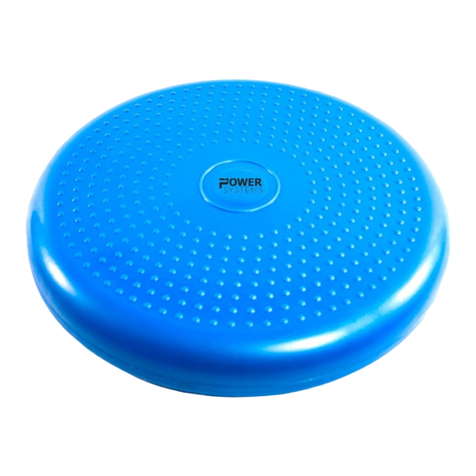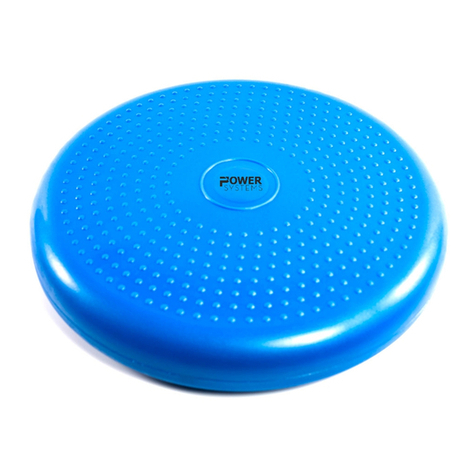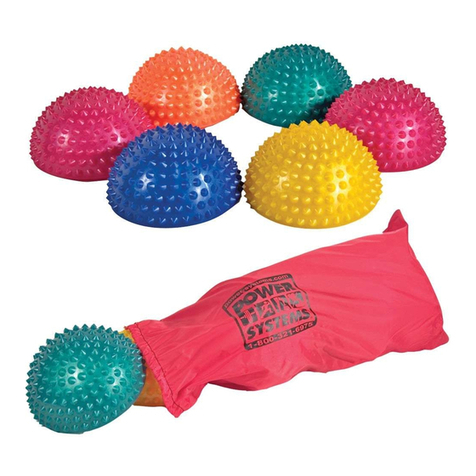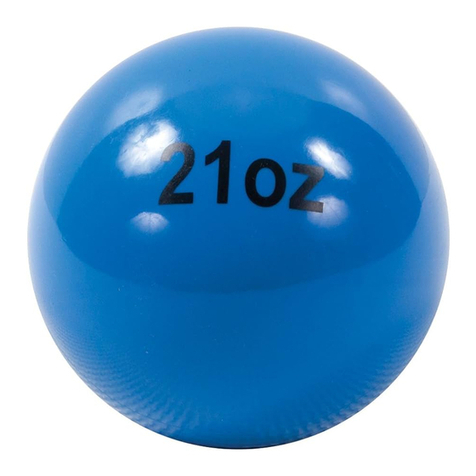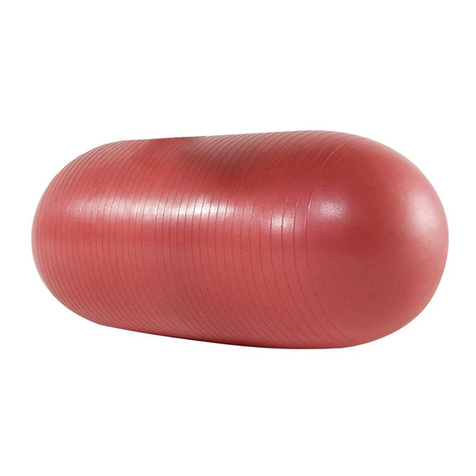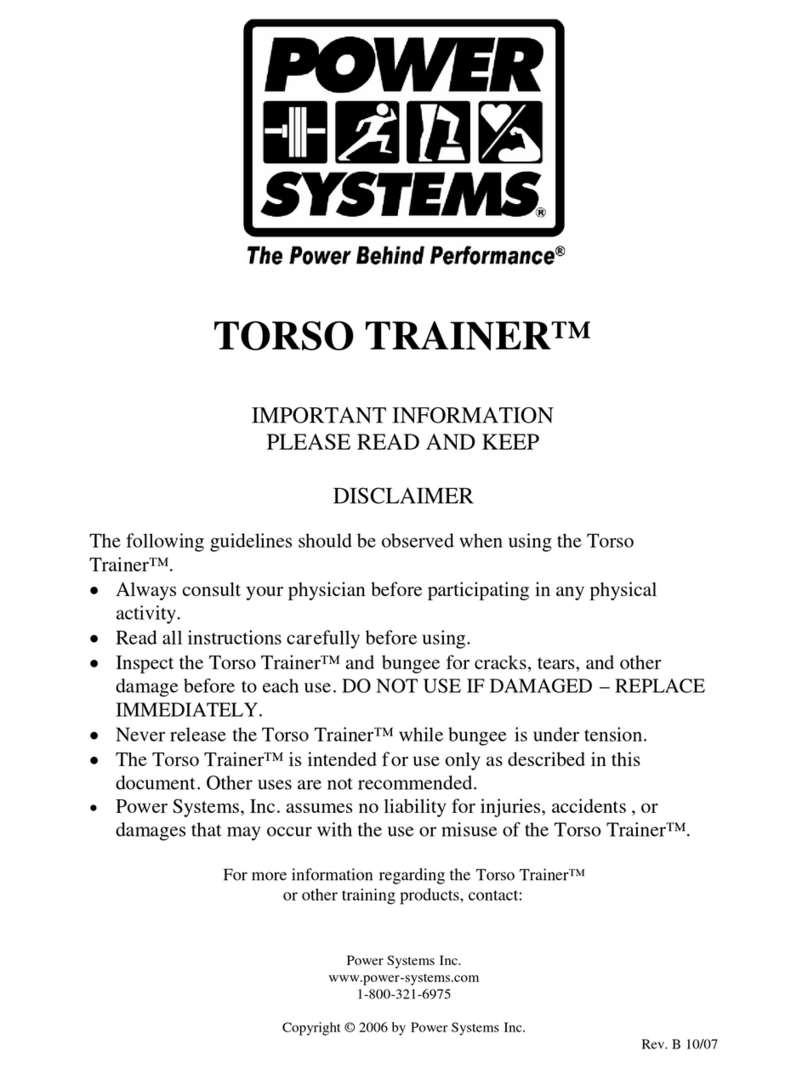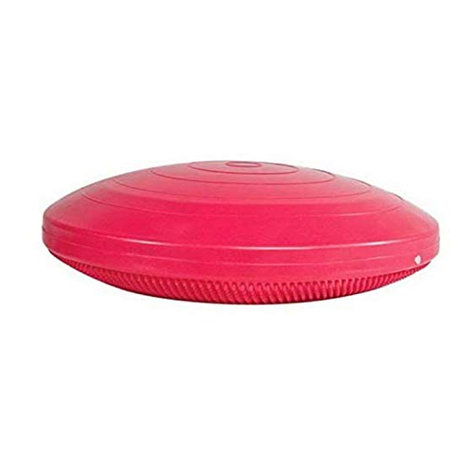
2 Rev. 06/04
VersaCore™ Trainer
Exercise gym balls / stability balls offer a dynamic training environment for a variety of
exercises at a variety of difficulty levels. Serious injury can occur when not used properly.
Power Systems brand gym balls are intended for use only as described in the enclosed
instructions. Other uses are not recommended. In addition to the enclosed instructions for
use, please observe the following precautions each and every time before using your gym
ball.
•The maximum loading capacity on the VersaCore™ Trainer Gym Ball is 250 lbs. or 115 kgs.
•Inspect your gym ball prior to each use. Look for any nicks, scratches, cuts, worn spots, or
any other defect that may cause the ball to break during use.
•DO NOT USE ball if damage or other defects are found. Discard and replace immediately.
Do not attempt to repair or patch a damaged ball.
•Gym balls are designed for indoor use. Do not use the ball outdoors.
•Gym balls are not toys. Children should only use with adult supervision.
•Only use the ball in an open space away from furniture, walls or other equipment. Inspect
the floor surface for any small objects that could puncture the ball.
•Do not exceed the maximum or suggested weight capacity for your ball.
•Do not wear jewelry, rings, watches, belt buckles or other sharp objects that could puncture
the ball.
•Maintain optimal posture when exercising on the ball. To avoid possible back injury, do not
bounce on the ball while bending or twisting the spine.
•Avoid prolonged exposure to sunlight or water.
•Keep the ball away from direct heat sources such as heaters and fireplaces.
•Life expectancy of this product is consistent with the amount of usage sustained. As a
precaution, gym balls should be replaced every year if used in an institutional or commercial
setting and every two years if used strictly for personal use.
•Always consult your physician before beginning any exercise program.
•POWER SYSTEMS, INC. ASSUMES NO LIABILITY FOR INJURY OR DAMAGES
THAT MAY OCCUR WITH USE OF THIS PRODUCT. POWER SYSTEMS WARRANTS
THAT THE DESIGN OF THE EXERCISE GYM BALLS/STABILITY BALLS IS IN
CONFORMANCE WITH ALL APPLICABLE DESIGN STANDARDS, RULES,
SPECIFICATIONS, REGULATIONS AND PRODUCT QUALITY STANDARDS
APPLICABLE TO SUCH EXERCISE GYM BALLS/STABILITY BALLS, THE
INDUSTRY USING THE EXERCISE GYM BALLS/STABILITY BALLS AND AT THE
TIME OF SALE, THE EXERCISE GYM BALLS/STABILITY BALLS SHALL BE FREE
FROM DEFECTS IN WORKMANSHIP OR MATERIALS. POWER SYSTEMS
EXPRESSLY DISCLAIMS ALL WARRANTIES OF ANY KIND RELATED TO THE
EXERCISE GYM BALLS/STABILITY BALLS OR THEIR SPECIFICATIONS OR
DESIGNS, WHETHER EXPRESS, IMPLIED OR STATUTORY, INCLUDING WITHOUT
LIMITATION THE IMPLIED WARRANTIES OF TITLE, MERCHANTABILITY AND
FITNESS FOR A PARTICLUAR PURPOSE.
